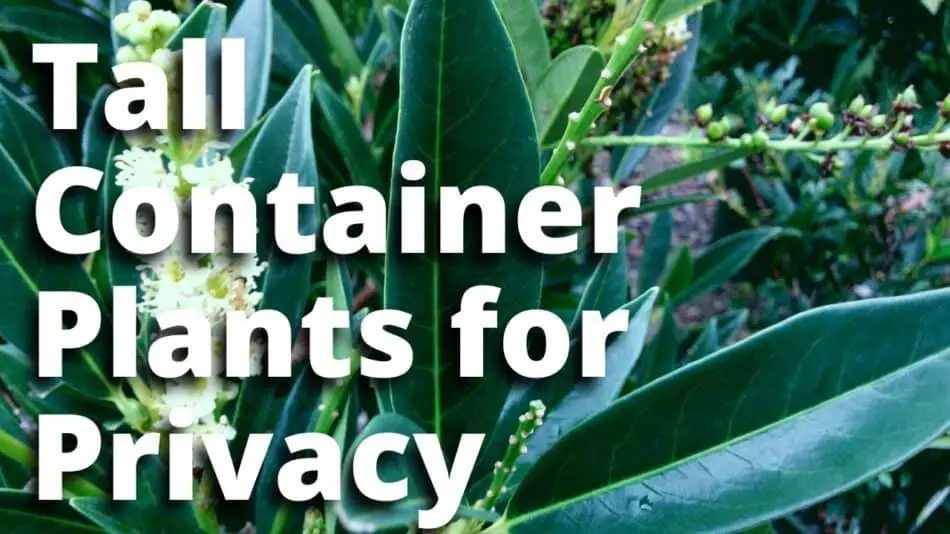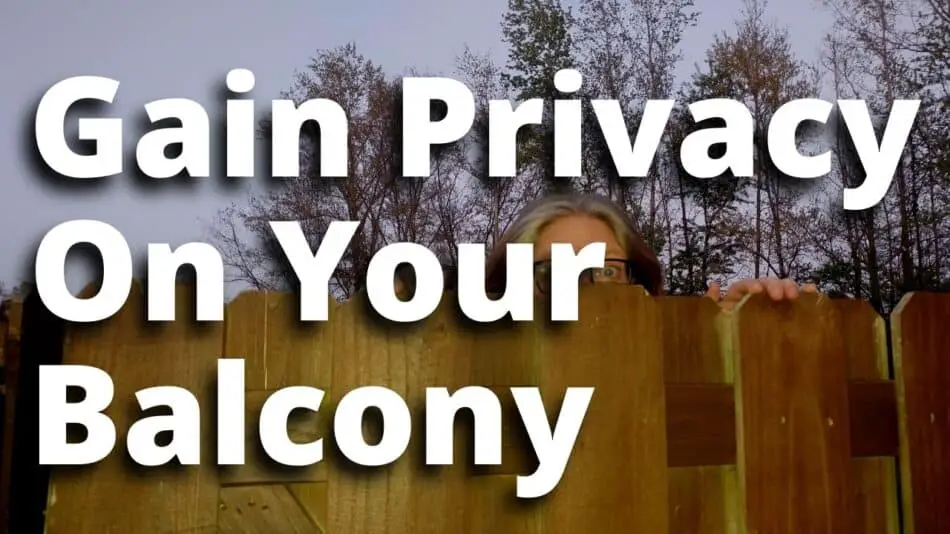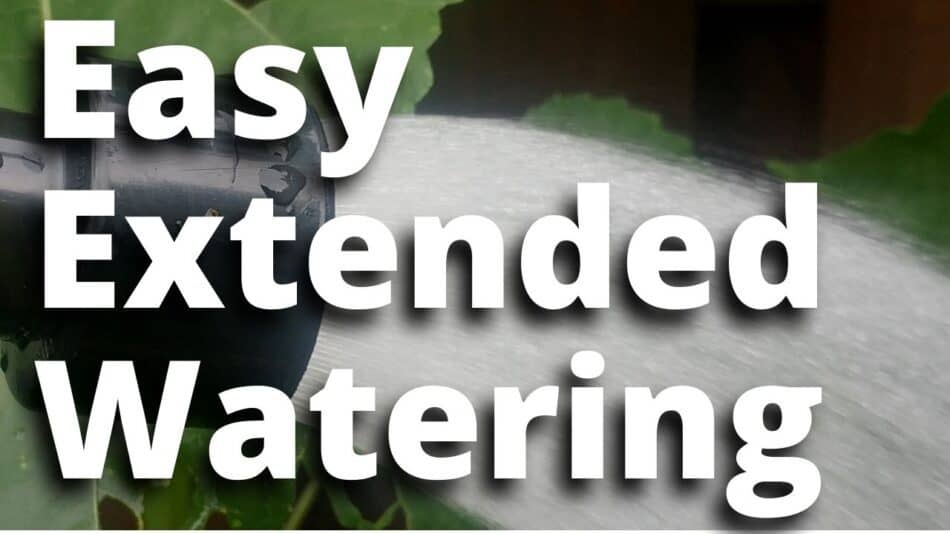1. Select The Right Plant.
Click Here to help you find the perfect plant for your project.
The faster-growing the hedge, the faster it also gets out of control. Questions to ask yourself are:
- How often do I want to trim the hedge?
- A formal hedge or informal, loose hedge?
- What size range do you want your hedge to be?
- How fast do I want it to get there?
- Do you want privacy, and do you need it year-round (evergreen hedges)
- How big will this hedge plant get?
- What plant will fit what I want this hedge to do?
2. Plan
- Find out where are the utility lines, call 811 in the United States, or go to https://call811.com/ it is the law, and it’s easy.
- Find out where your own private plumbing, septic, invisible fence, or other wires and pipes are.
- Foundations, walkways, or paved drives. Keep plants at least as far away from the foundation as the plant grows tall. If you are installing a hedge with plants that grow to 10 ft at maturity, regardless of what height you plan to keep it trimmed too, plant 10 ft away from the foundation, walkway, or water/sewer pipes. Plants do not create holes in these structures or pipes, but they will exploit an existing weakness. Dealing With Tree Root Damage of Sewer and Water Line (thoughtco.com)
- Windows, do you want to block the windows or leave them clear?
- Downspouts, do you want to hide a downspout? Where does it empty it’s water, and ensure it drains away from the building.
- Eaves, do not plant under the eaves, your hedge plants will either get pounded when it rains or snow slides off your roof, or will be too close to your walls. Plant hedges further out from your house than the eaves.
- Grading from the foundation. The Slope of the grade should be away from the building, and you want to retain that grade, draining water away from your home.
- Swales. A swale is a type of ground grading that re-directs incoming water flow along and away from the building.
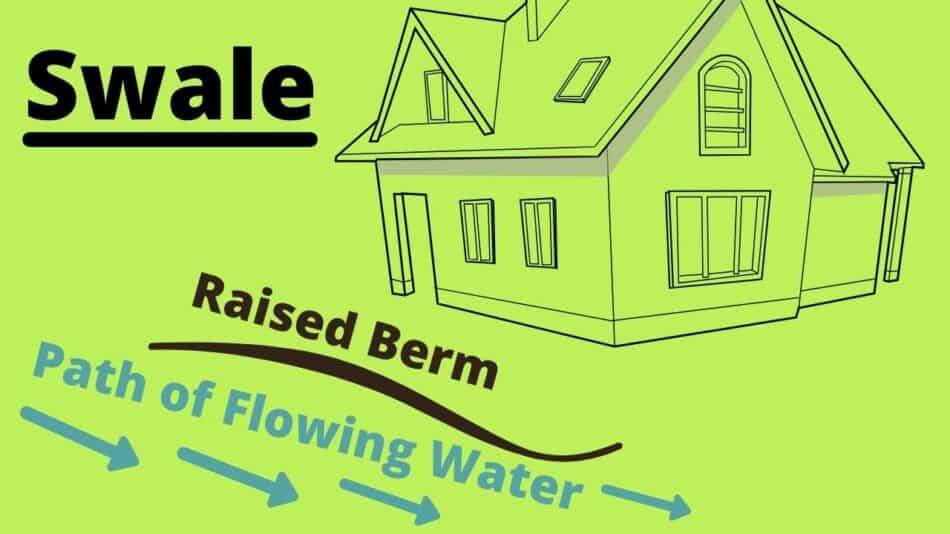
https://www.springfieldmo.gov/DocumentCenter/View/3429/Earth-Berms-and-Drainage-Swales-PDF?bidId=
Distance from the building. Your hedge should not touch a building at maturity. While choosing what plant to make your hedge from, take into the mature height and width of the plant. When a plant touches a building, moisture and humidity collect, which is the bane to building materials. It causes rot and deterioration. The moisture will attract insects. The branches will get in the way of building maintenance, and repair. Plant far enough from buildings so there is a path between the full growth plant and the building.
3. Irrigation Plans
How will you irrigate after planting, during the establishment period, and after if needed?
Water the newly planted hedge until it is established. To find out more, click here to read ‘Water New Trees & Flowers – Volume, Frequency & Best Tips’
4. Soil To amend or not to amend. That is the question.
But seriously, yes, do amend your soil.
Do NOT dig up, remove and replace the planting area’s soil with the ‘perfect mix.
DO dig up, and add up to half of the volume of backfill soil with compost, pine fines, coco coir, peat moss, and the like.
Mix in with the existing soil that you are backfilling with.
Test your soil for drainage. Dig a hole, fill halfway with water, see if it takes more than an hour to drain away. If It takes longer than an hour to drain, plant your hedge on a berm. Raise the planting area above grade, like a raised bed without the supporting structure, about 6-12”.
5. Layout plants
While the plants are still in their pots, put them out where you are going to plant them. It will look small, sparse and really far from the house. Perfect, yes really. These hedge plants will grow much larger than you expect. Give them some elbow room.
6. Prepare the soil
- Dig carefully and stay aware while digging for unexpected underground objects.
- Remove existing plants grass and weeds
- Remove larger rocks
- Dig the holes or a trench.
- Amend the backfill soil, up to a third of soil volume
- Fertilize with granular fertilizer, follow the directions on your chosen fertilizer package for amounts. If unsure, less is better than more. I recommend inoculation with mycorrhizae.
- Water deeply, let it soak in, and water again.
- Mulch with 2-3 inches of mulch, not touching the trunks of the plants, spread out over the entirety of the hedge base area.
- Deer repellant. Unless you never have problems with deer in your area, spray with a deer repellant. Even if you planted shrubs that are supposed to be deer resistant, spray these new, tender plants with deer repellant. Better safe than sorry, and give your hedge some time to root in before the deer even consider munching on them.
7. Get Off To A Good Start – Get Established
- Mulch with 3 inches of mulch, up to 3” of the trunk, not touching. This is one of the most important things you can do to get your hedge off to a good start.
- This will control soil moisture, soil temperature, and weed competition later.
- Irrigation, water deeply 2-3X a week for the first season, especially if hot or windy. Ask at a local independent garden center for local considerations that might change these recommendations.
- Pest control, watch for pests such as aphids, mites, caterpillars, beetles, or deer. I like to repel pests with neem oil. Consider if you can use neem oil safely, do not use if over 90 deg F for example, and check your specific plant is not sensitive to neem oil. Some plants sensitive are “impatiens, fuchsias, hibiscus, and some roses, trees like maples, hickories or black walnut.” https://www.discoverneem.com/spray-neem.html. Watch for pests weekly, as an infestation now is more likely, as a newly planted plant is stressed, and a stressed plant attracts pests. If deer are likely, spray with a deer repellant. After a hedge is established, it can overcome the occasional pest, but a newly planted hedge will struggle with the addition of stressors like deer and pests. Prevention will save you money and time.
- Pruning, after you see new growth starting, lightly tip prune deciduous, and broad-leaved evergreens. This will promote branching and a thicker hedge; UNLESS this places the pruning in late summer through winter. If that is the case, prune in late winter or early spring.
- Fertilization is usually not needed for hedges. Fertilizers will promote faster growth, faster growth can attract pests and disease. If you choose to fertilize, fertilize the following season following the recommendations specific to the plants in your hedge. Commonly, fertilize twice, in the spring and in summer with a granular fertilizer. Less is more, depending on your brand and formulation of fertilizer, the amounts will change, follow the bag instructions. If in doubt, use less than you think you need to use.
- Prune yearly for the thickest hedge. Do Not Wait until your hedge is at the height you want to start pruning, which leads to a thin hedge that becomes top-heavy. Prune every year, even if just a little bit. Think of it as trimming your hair while you are trying to grow it out.
- Enjoy! Remember landscapes are NOT like decorating your house. Landscapes change and grow and shift every year, and throughout the season. Don’t fight the differences, embrace them and use them to your landscape’s advantage!
-
Japanese Maples W/ Unusual Peach Color on New Leaves In The Spring
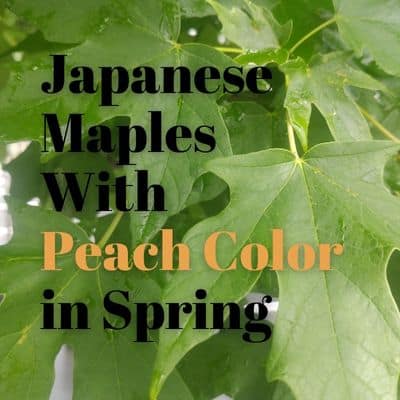
ACER CIRCINATUM ‘SUNNY SISTER’ 6-8 6-7 peach lt green yellow/ orange Amoenum upright ACER ELEGANTULUM X PALMATUM ‘JOHNNIE’S GIANT’ 6-9 FAST 15 Peach dk green yellow/ orange Matsumurae upright ACER
-
What Japanese Maples Are Orange In The Fall?

Latin name zones height 10-15 yrs spring color summer color fall color leaf type tree shape ACER JAPONICUM ‘EMMETT’S PUMPKIN’ FULL MOON 5-9 12-15 org/over green dark green orange Palmatum
-
Magnolia ‘Coppertallica’ Exciting New Variety In My Garden

Magnolia ‘Coppertallica’ has a true metallic sheen that glimmers when it catches the sun on the undersides of the leaves. I did not believe it until I saw it myself.





